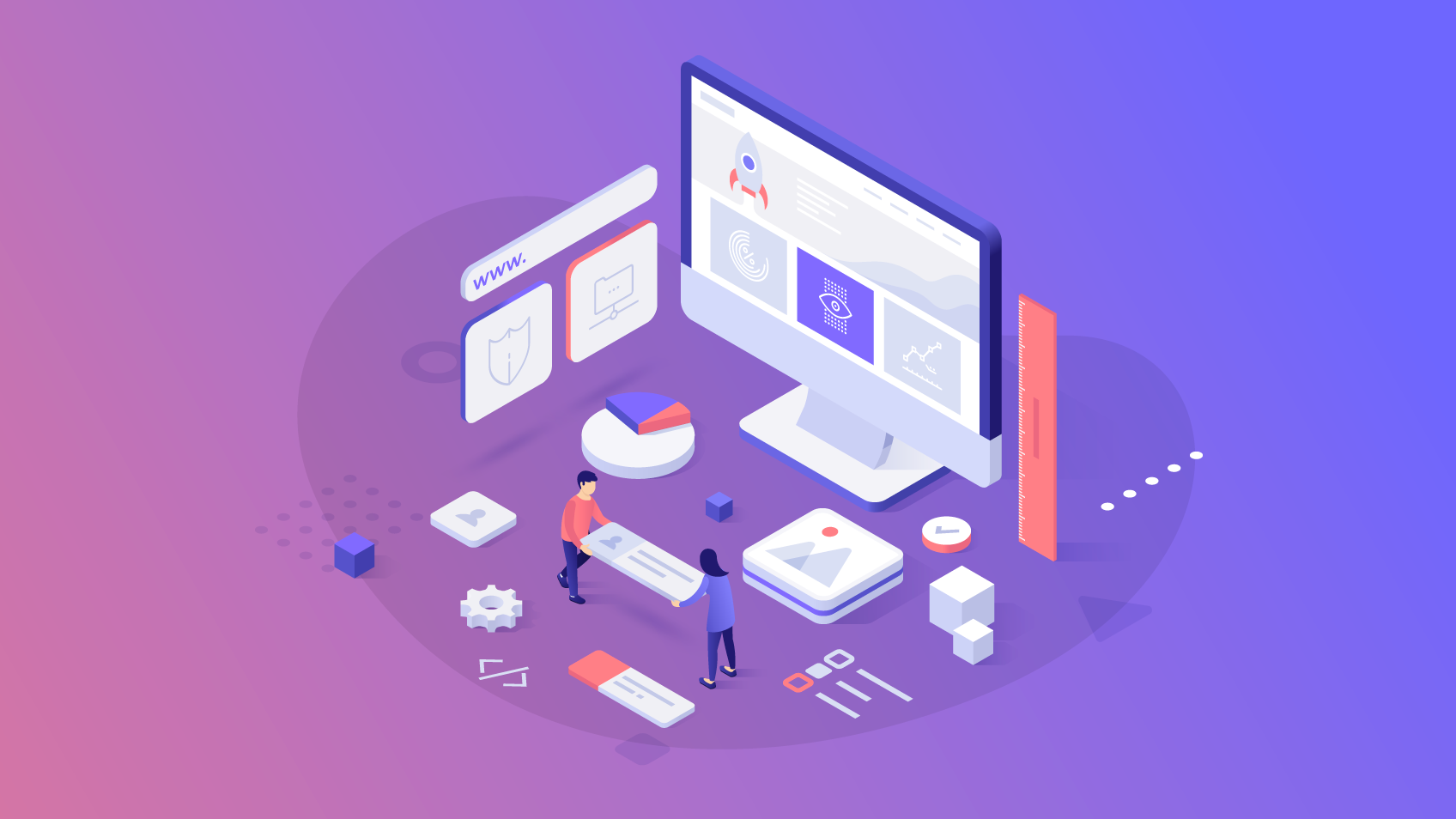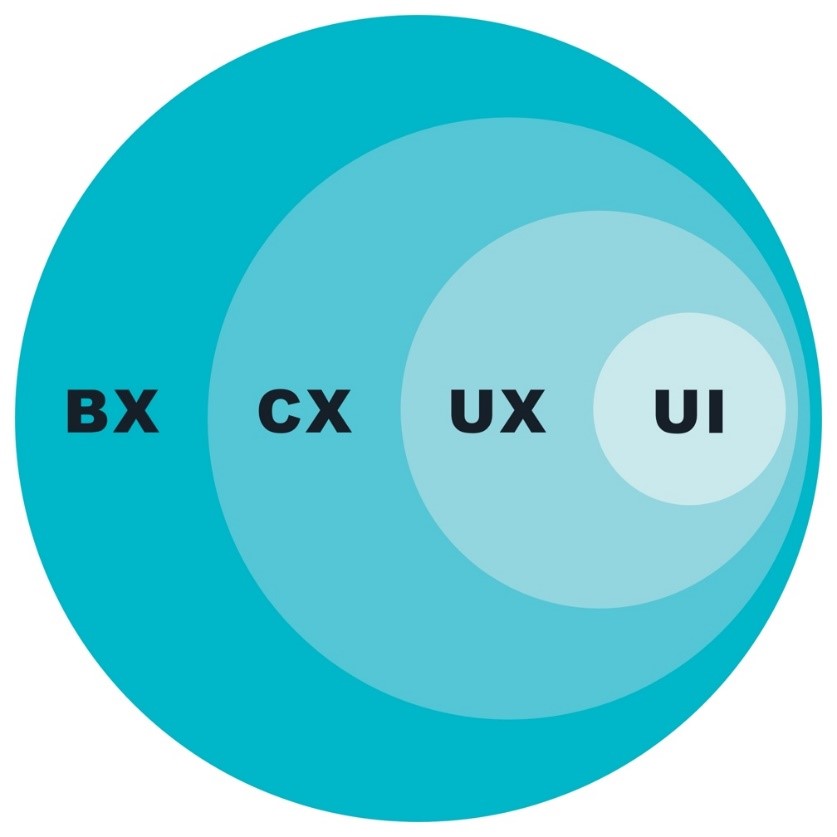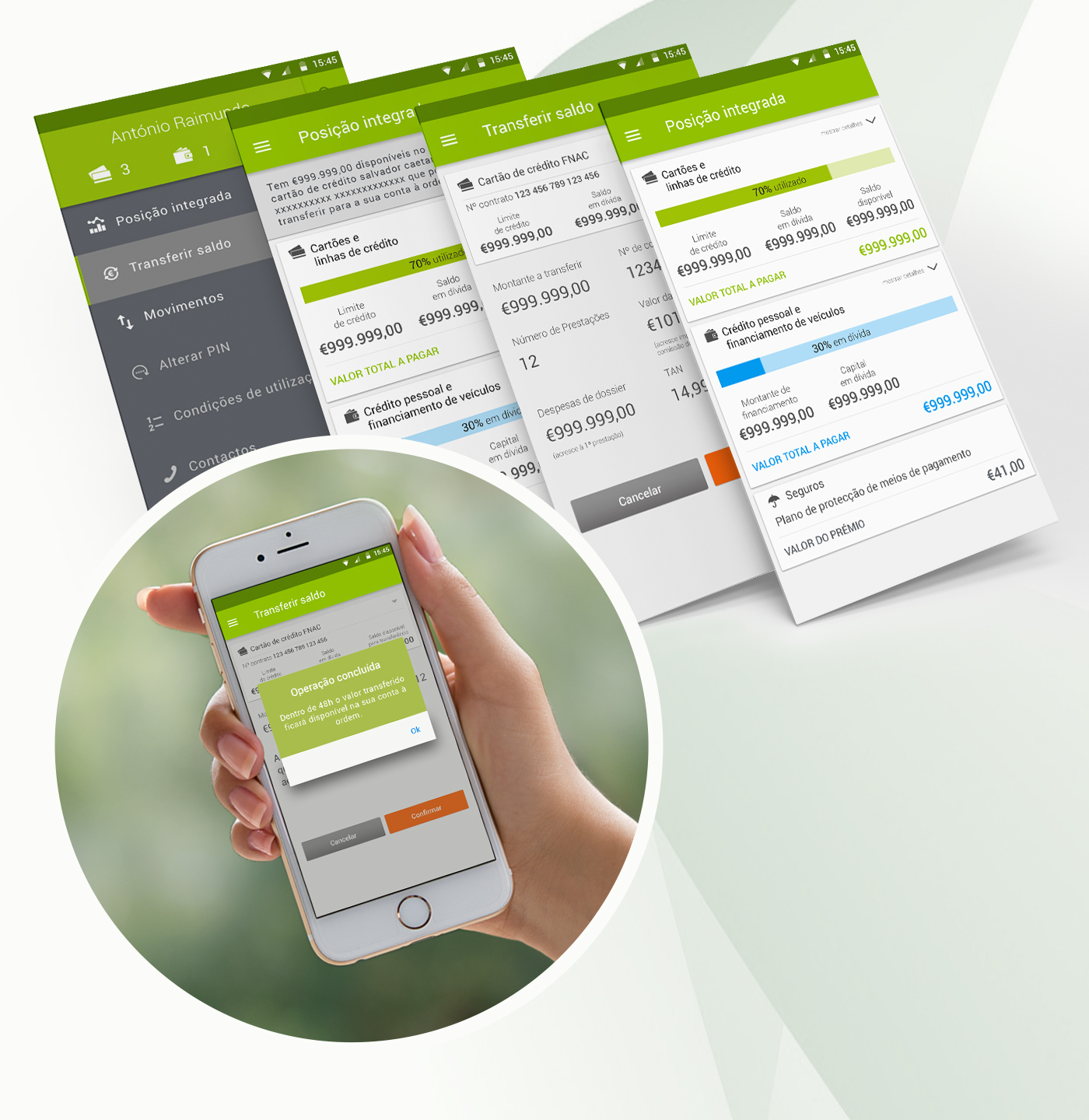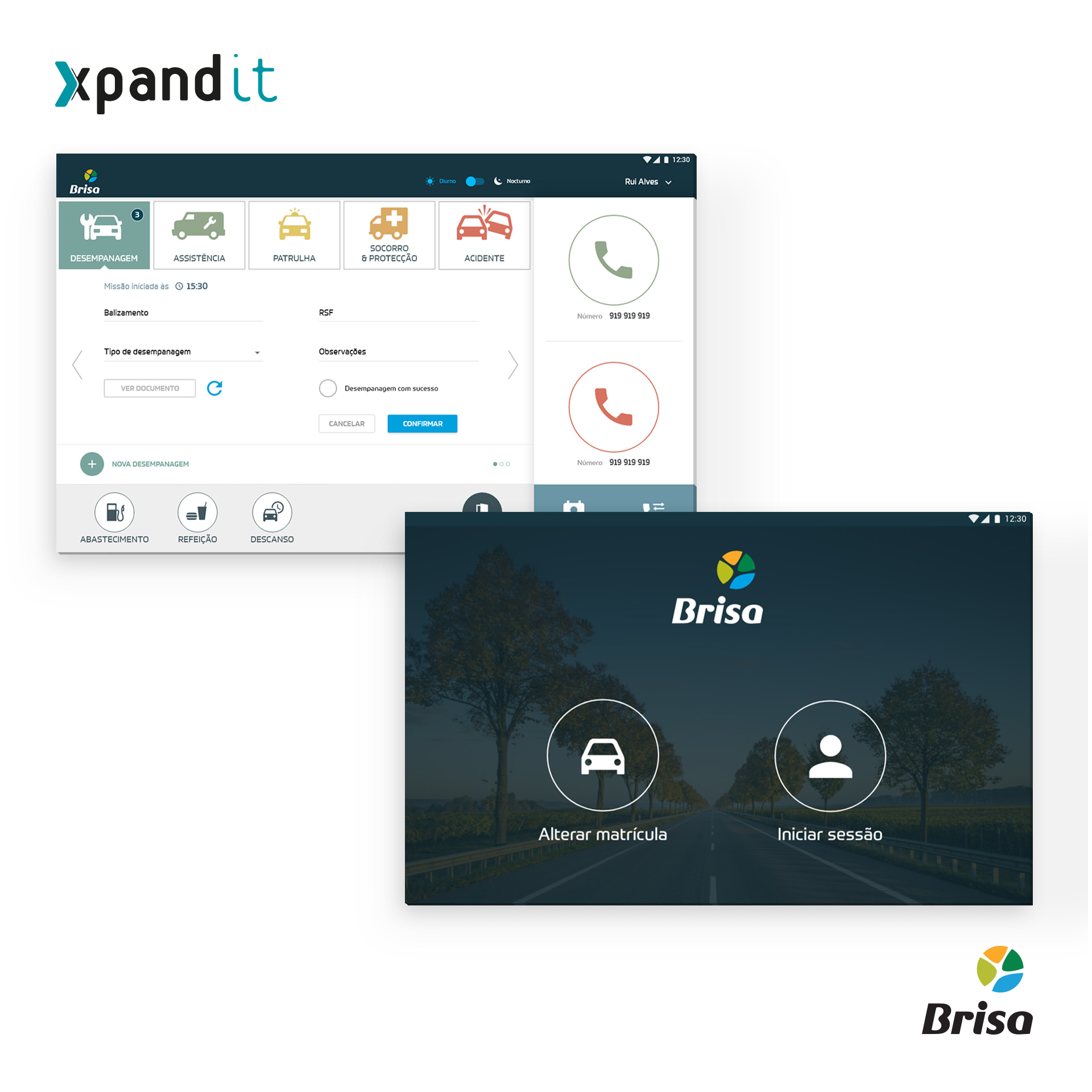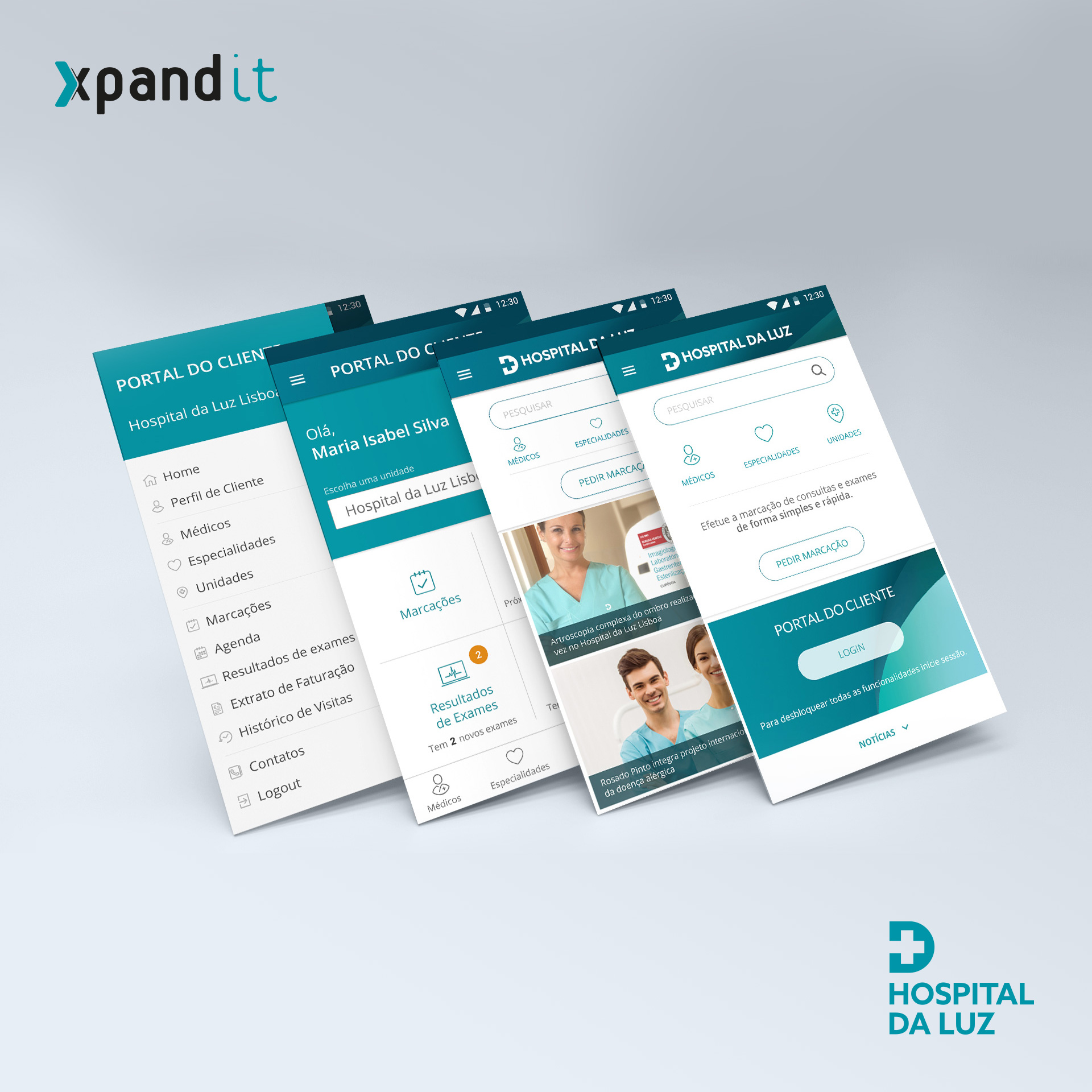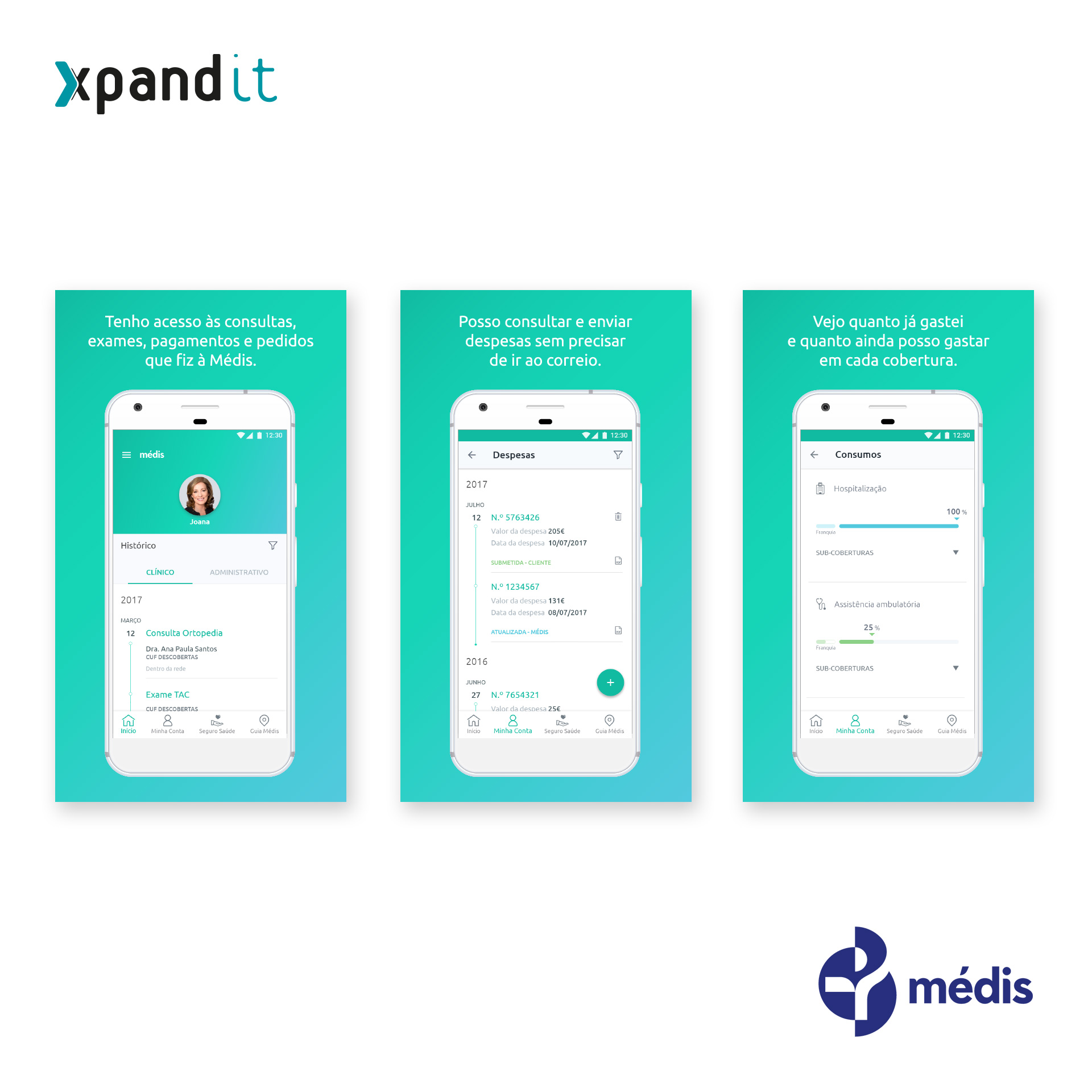DIESER ARTIKEL IN 5 SEKUNDEN:
- Indem wir die UX Strategie anwenden, versuchen wir ein tiefes Verständnis für die Schnittstelle zwischen Geschäftszielen, Nutzerbedürfnissen und Umsetzungsmöglichkeiten zu erlangen.
- Aber wie können wir diesen Prozess in einem Unternehmen effektiv umsetzen und dabei die Unternehmensvision berücksichtigen? In diesem Artikel erfahren Sie alles.
Wie oft werden wir mit dem Versprechen eines spektakulären und innovativen digitalen Erlebnisses konfrontiert, nur um dann bei der Umsetzung mit der harten Realität der Unpraktikabilität konfrontiert zu werden?
Das idealisierte Konzept für das Erlebnis geht in der technischen Komplexität unter, was zu einem Endprodukt führt, das aufgrund des Fehlens einer fundierten Analyse keinen Wert und keine Glaubwürdigkeit bietet.
Es ist ein häufiges Dilemma im UX-Universum, das die ursprüngliche Vision überschattet und die Essenz dessen, was ein effektives Erlebnis ausmacht, beeinträchtigt.
In diesem herausfordernden Szenario erweist sich die Strategie als Schlüsselelement, das die Lücke zwischen den Projektteams schließt. Sie ist der Prozess, der eine inspirierende Vision mit einer pragmatischen Umsetzung verbindet und sicherstellt, dass das digitale Erlebnis nicht nur eine Idee ist, sondern etwas Greifbares und Wirkungsvolles.
Das Konzept der Strategie ist in vielen Bereichen des täglichen Lebens zu finden, vom Sport bis hin zu Unternehmensentscheidungen. Im Zusammenhang mit UX ist es das Fundament, auf dem wir einprägsame digitale Erlebnisse aufbauen.
Allgemein gesagt, ist Strategie die Kunst der Planung und Ausrichtung von Maßnahmen zur Erreichung bestimmter Ziele. Ob in der Wirtschaft, bei Produkten oder in jedem anderen Bereich, Strategie ist der Kompass, der die Schritte zum Erfolg leitet.
Bei UX ist dieser Ansatz nicht anders.
Durch die Anwendung von Strategie auf UX versuchen wir, ein tiefes Verständnis für die Überschneidung von Geschäftszielen, Nutzerbedürfnissen und Implementierungskapazitäten zu erlangen. Es ist ein Prozess der sorgfältigen Abstimmung zwischen der makroökonomischen Vision eines Unternehmens und den Grundlagen, die das Nutzererlebnis wertvoll machen.
1 – Festlegen einer UX-Strategie
In der Welt der UX muss die Strategie ein solider Plan sein, der entscheidende Fragen beantwortet:
Dos und Don’ts: Die UX-Strategie soll aufzeigen, welche Maßnahmen zu ergreifen und welche zu vermeiden sind, um die angestrebten Ergebnisse zu erreichen.
Welcher Mehrwert wird geschaffen? Es wird hervorgehoben, was das Produkt oder die Dienstleistung einzigartig macht, und es wird ein klares Nutzenversprechen gegeben, das sich auf die Nutzer auswirkt.
Welche Ressourcen sollen zur Verfügung gestellt werden? Sie gibt vor, worauf sich die Ressourcen des Unternehmens konzentrieren sollen, und stellt sicher, dass die Investitionen zur allgemeinen Vision und zum Ziel beitragen.
Das ultimative Ziel der UX-Strategie ist es, einen Wettbewerbsvorteil zu erlangen.
Sie sollte nicht als isoliertes Konzept verstanden werden, sondern als eine Denkweise, die in jeder Entscheidung, jeder Iteration und jeder Codezeile präsent ist.
2 – Die drei Dimensionen der UX-Strategie
Im Zusammenhang mit UX ist der Schwerpunkt der Strategie ein dreifacher:
Geschäftsziele: Abstimmung der Ziele des Unternehmens auf die digitale Erfahrung, die es umsetzen möchte.
Auf die Nutzer eingehen: den Nutzer in den Mittelpunkt des Prozesses stellen, seine Bedürfnisse, Erwartungen und Beschwerden verstehen.
Umsetzungskapazität: Sicherstellung, dass die im Erlebniskonzept ausgedrückten Ideen effektiv in greifbare digitale Produkte umgesetzt werden können.
3 – UX-Strategie als harmonisierendes Element: Die Gründe für Entscheidungen
Bei der Schaffung digitaler Erlebnisse harmonisiert die UX-Strategie die drei oben genannten Dimensionen: Unternehmen, Nutzer und Bereitstellung. Sie vereint diese Dimensionen nicht nur, sondern überschneidet sie und schafft so einen Zusammenhalt mit Klarheit und Objektivität.
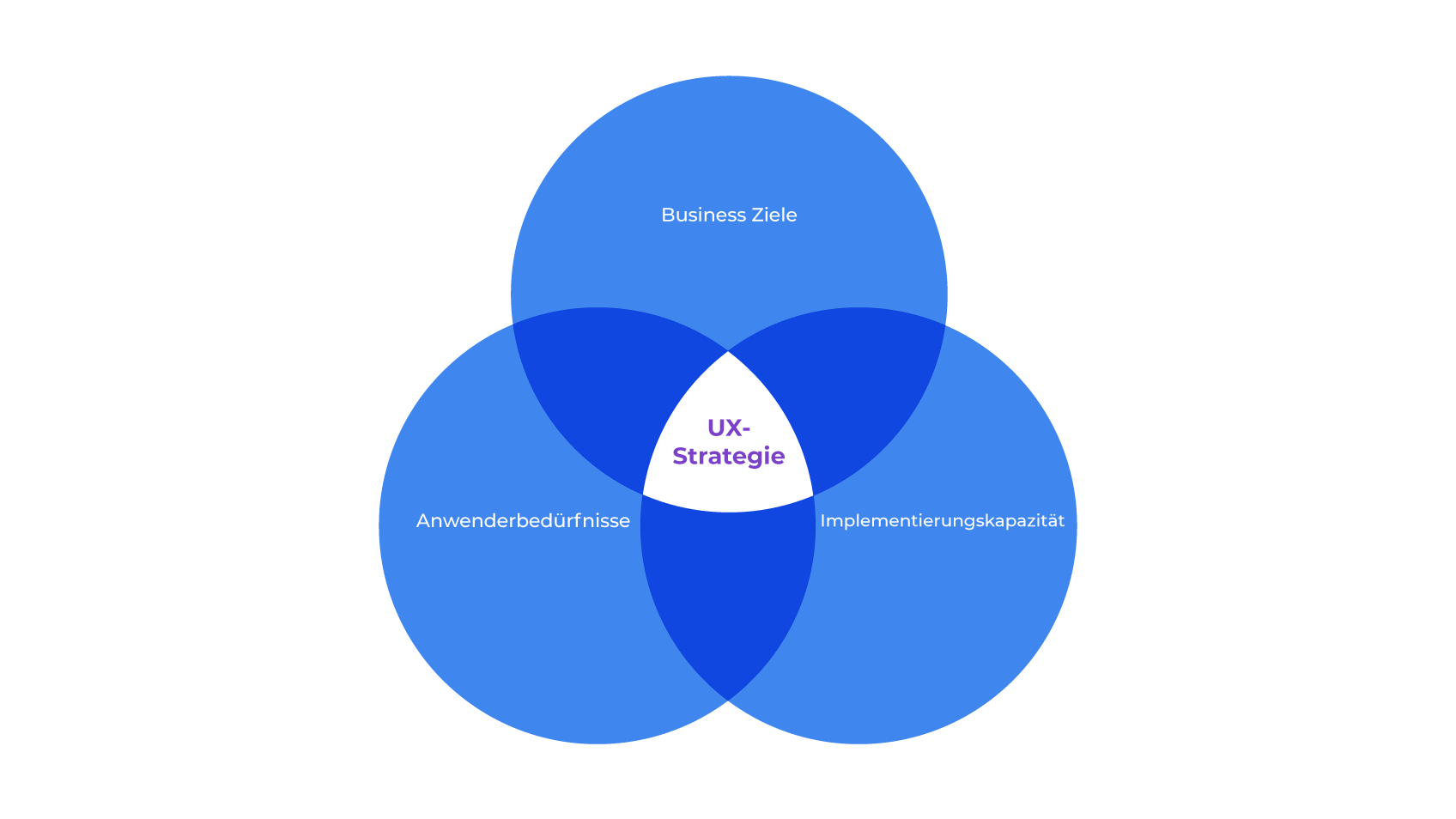
Der Raum zwischen diesen drei Dimensionen ist oft ein fruchtbarer Boden für Missverständnisse und falsche Entscheidungen. Die Strategie zielt darauf ab, diese Lücken zu schließen und die Mehrdeutigkeit zu verringern.
Da die Strategie keine Vermutungen zulässt, bietet sie eine solide Grundlage für fundierte Entscheidungen – sie basiert nicht auf Vermutungen oder Intuition, sondern auf gründlicher Analyse und ganzheitlichem Verständnis.
Jeder Schritt im Prozess der Erlebnisgestaltung wird durch die UX-Strategie sorgfältig umrissen. Von der anfänglichen Konzeption bis zur Umsetzung wird jede Entscheidung durch eine klare Begründung gestützt, die durch Daten, Forschung und Abstimmung untermauert wird, um nicht nur ein funktionales Produkt, sondern ein Erlebnis zu bieten, das die Erwartungen erfüllt oder übertrifft.
Die UX-Strategie ist eine Karte, die Projektteams durch ein komplexes Terrain führt. Legen Sie klar fest, was getan werden muss und, was ebenso wichtig ist, was nicht getan werden darf, und konzentrieren Sie sich dabei auf das erwartete Ergebnis.
4 – Wie wir eine UX-Strategie bei Xpand IT umsetzen
Wie können wir diesen Prozess im Rahmen eines Unternehmens effektiv umsetzen? Die aus dem Prozess resultierenden Ergebnisse können in Bezug auf den Aufwand variieren, je nach Tiefe und Komplexität der Herausforderungen, denen wir gegenüberstehen. Von einer eintägigen Frist bis hin zu einer kontinuierlichen Präsenz ist der Prozess flexibel und anpassungsfähig, um auf jede Situation zu reagieren.
UX-Strategie an einem Tag:
- Discovery Session zur Definition des Problems
- Einfache Marktanalyse
- Identifizierung von Verbesserungsmöglichkeiten
- Präsentation Pitch
UX-Strategie-Sprint:
- Discovery Session zur Definition des Problems
- Forschung: Marktanalyse, Wettbewerb und digitaler Ansatz (einfach)
- Zielidentifizierung und -analyse (einfach)
- Präsentation von strategischen Wertvorschlägen
- Konzepterstellung: Wireframe
- Präsentation und Lieferung von POC – proof of concept
UX-Strategie-Bericht:
- Entdeckungs- und Ideensitzung
- Forschung: Marktanalyse, Wettbewerb und digitaler Ansatz (einfach)
- Identifizierung und Analyse der Zielgruppe (Erstellung von Personas)
- Präsentation von strategischen Wertvorschlägen
- Konzepterstellung – UI
- Präsentation und Lieferung von POC – proof of concept
- Ergebnisbericht zur Ermittlung von Wertvorschlägen
Kontinuierlich – UX als Dienstleistung:
- Abstimmung mit dem funktionalen Analyseteam
- Kontinuierliche Zuweisung zum Projekt
- Aktive Beteiligung an mehreren strategischen Initiativen des Kunden
- Identifizierung neuer As a Service-Trends
- Abgleich von Chancen und langfristigem Konzept
5 – Schlussfolgerung – UX-Strategie als Rahmen für Erfahrungen
Die in diesem Zusammenhang skizzierte UX-Strategie ist nicht nur eine Methodik, sondern ein Strukturierungsmittel für alle Elemente eines Projekts.
Durch die Eliminierung von Vermutungen ist jeder Schritt im UX-Prozess ein bewusster Ausdruck der Strategie, bei dem die Teams zusammenarbeiten, um eine kohärente Erzählung zu erstellen.
Der Erfolg eines digitalen Produkts wird nicht nur durch seine technische Funktionalität bestimmt, sondern auch durch das Gesamterlebnis, das es bietet. Die UX-Strategie wird zur treibenden Kraft hinter diesem Erlebnis.
Schließlich ist es wichtig zu erkennen, dass die UX-Strategie kein statisches Gebilde ist, sondern dynamisch und anpassungsfähig ist. Wenn sich die Nutzerbedürfnisse entwickeln und die Geschäftsziele anpassen, dient die Strategie als flexibler Leitfaden, der sicherstellt, dass das digitale Erlebnis mit der Vision des Unternehmens im Einklang steht.
Indem wir eine strategische Denkweise in den UX-Ansatz einbeziehen, schaffen wir nicht einfach nur digitale Produkte: Wir schmieden Erlebnisse, die über die Erwartungen hinausgehen und einen bleibenden Eindruck bei denjenigen hinterlassen, die das digitale Produkt nutzen und fühlen.







